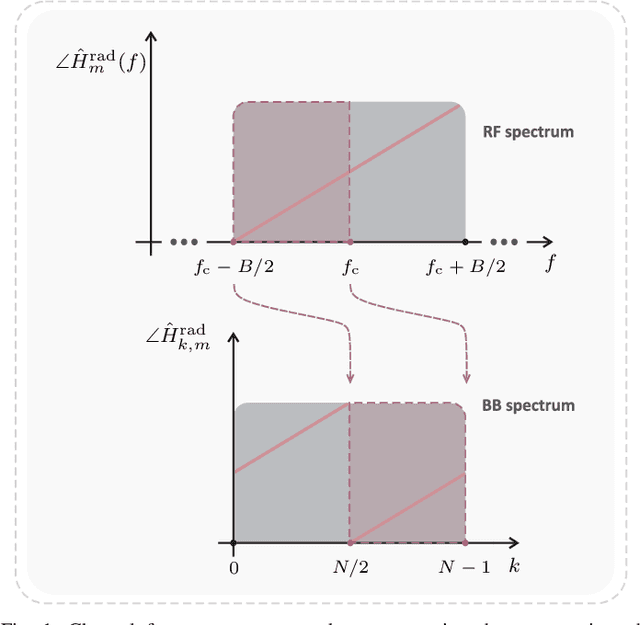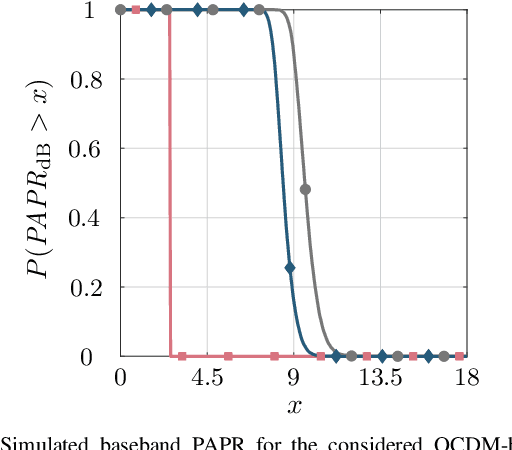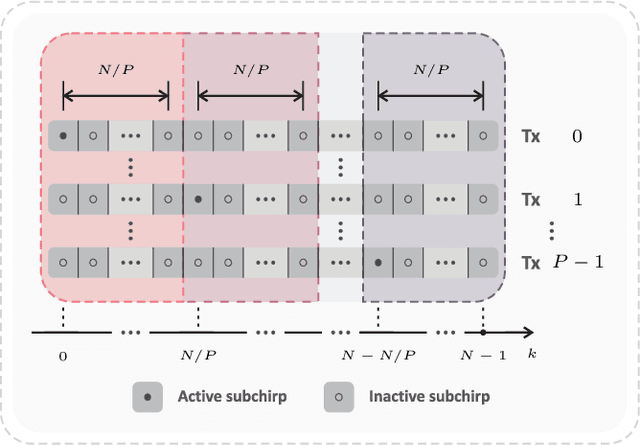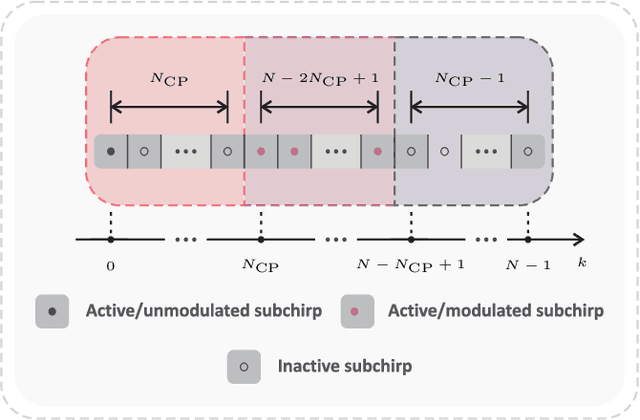Xueyun Long
Multi-RIS Deployment Optimization for mmWave ISAC Systems in Real-World Environments
Aug 10, 2025Abstract:Reconfigurable intelligent surface-assisted integrated sensing and communication (RIS-ISAC) presents a promising system architecture to leverage the wide bandwidth available at millimeter-wave (mmWave) frequencies, while mitigating severe signal propagation losses and reducing infrastructure costs. To enhance ISAC functionalities in the future air-ground integrated network applications, RIS deployment must be carefully designed and evaluated, which forms the core motivation of this paper. To ensure practical relevance, a multi-RIS-ISAC system is established, with its signal model at mmWave frequencies demonstrated using ray-launching calibrated to real-world environments. On this basis, an energy-efficiency-driven optimization problem is formulated to minimize the multi-RIS size-to-coverage sum ratio, comprehensively considering real-world RIS deployment constraints, positions, orientations, as well as ISAC beamforming strategies at both the base station and the RISs. To solve the resulting non-convex mixed-integer problem, a simplified reformulation based on equivalent gain scaling method is introduced. A two-step iterative algorithm is then proposed, in which the deployment parameters are determined under fixed RIS positions in the first step, and the RIS position set is updated in the second step to progressively approach the optimum solution. Simulation results based on realistic parameter benchmarks present that the optimized RISs deployment significantly enhances communication coverage and sensing accuracy with the minimum RIS sizes, outperforming existing approaches.
System Concept and Demonstration of Bistatic MIMO-OFDM-based ISAC
Apr 10, 2025Abstract:In future sixth-generation (6G) mobile networks, radar sensing is expected to be offered as an additional service to its original purpose of communication. Merging these two functions results in integrated sensing and communication (ISAC) systems. In this context, bistatic ISAC appears as a possibility to exploit the distributed nature of cellular networks while avoiding highly demanding hardware requirements such as full-duplex operation. Recent studies have introduced strategies to perform required synchronization and data exchange between nodes for bistatic ISAC operation, based on orthogonal frequency-division multiplexing (OFDM), however, only for single-input single-output architectures. In this article, a system concept for a bistatic multiple-input multiple-output (MIMO)-OFDM-based ISAC system with beamforming at both transmitter and receiver is proposed, and a distribution synchronization concept to ensure coherence among the different receive channels for direction-of-arrival estimation is presented. After a discussion on the ISAC processing chain, including relevant aspects for practical deployments such as transmitter digital pre-distortion and receiver calibration, a 4x8 MIMO measurement setup at 27.5 GHz and results are presented to validate the proposed system and distribution synchronization concepts.
Joint BS Deployment and Power Optimization for Minimum EMF Exposure with RL in Real-World Based Urban Scenario
Apr 07, 2025Abstract:Conventional base station (BS) deployments typically prioritize coverage, quality of service (QoS), or cost reduction, often overlooking electromagnetic field (EMF) exposure. Whereas EMF exposure triggers significant public concern due to its potential health implications, making it crucial to address when deploying BS in densely populated areas. To this end, this paper addresses minimizing average EMF exposure while maintaining coverage in a 3D urban scenario by jointly optimizing BS deployment and power. To address this, firstly, accurate EMF prediction is essential, as traditional empirical models lack the required accuracy, necessitating a deterministic channel model. A novel least-time shoot-and-bounce ray (SBR) ray-launching (RL) algorithm is therefore developed to overcome several limitations of current simulators and is validated with real-world measurements. Secondly, to further reduce computational complexity, unlike using a fixed grid size to discretize the target area, the adaptive grid refinement (AGR) algorithm is designed with a flexible grid to predict the overall EMF exposure. Finally, based on the EMF exposure predictions, the Nelder-Mead (NM) method is used in the joint optimization, and urban user equipment (UE) distributions are incorporated to better reflect real-world conditions. When evaluating the benefits of the whole process, the results are compared against using empirical channel models, revealing notable differences and underestimation of EMF exposure that highlight the importance of considering real-world scenario.
Bridging Simulation and Measurements through Ray-Launching Analysis: A Study in a Complex Urban Scenario Environment
Jun 12, 2024



Abstract:With the rapid increase in mobile subscribers, there is a drive towards achieving higher data rates, prompting the use of higher frequencies in future wireless communication technologies. Wave propagation channel modeling for these frequencies must be considered in conjunction with measurement results. This paper presents a ray-launching (RL)-based simulation in a complex urban scenario characterized by an undulating terrain with a high density of trees. The simulation results tend to closely match the reported measurements when more details are considered. This underscores the benefits of using the RL method, which provides detailed space-time and angle-delay results.
Discrete-Fresnel Domain Channel Estimation in OCDM-based Radar Systems
Jul 21, 2022



Abstract:In recent years, orthogonal chirp-division multiplexing (OCDM) has been increasingly considered as an alternative multicarrier scheme, e.g., to orthogonal frequency-division multiplexing, in digital communication applications. Among reasons for thar are its demonstrated superior performance resulting from its robustness to impairments such as frequency selectivity of channels and intersymbol interference. Furthermore, the so-called unbiased channel estimation in the discrete-Fresnel domain has also been investigated for both communication and sensing systems, however without considering the effects of frequency shifts. This article investigates the suitability of the aforementioned discrete-Fresnel domain channel estimation in OCDM-based radar systems as an alternative to the correlation-based processing previously adopted, e.g., in the radar-communication (RadCom) literature, which yields high sidelobe level depending on the symbols modulated onto the orthogonal subchirps. In this context, a mathematical formulation for the aforementioned channel estimation approach is introduced. Additionally, extensions to multi-user/multiple-input multiple-output and RadCom operations are proposed. Finally, the performance of the proposed schemes is analyzed, and the presented discussion is supported by simulation and measurement results. In summary, all proposed OCDM-based schemes yield comparable radar sensing performance to their orthogonal frequency-division multiplexing counterpart, while achieving improved peak-to-average power ratio and, in the RadCom case, communication performance.
 Add to Chrome
Add to Chrome Add to Firefox
Add to Firefox Add to Edge
Add to Edge